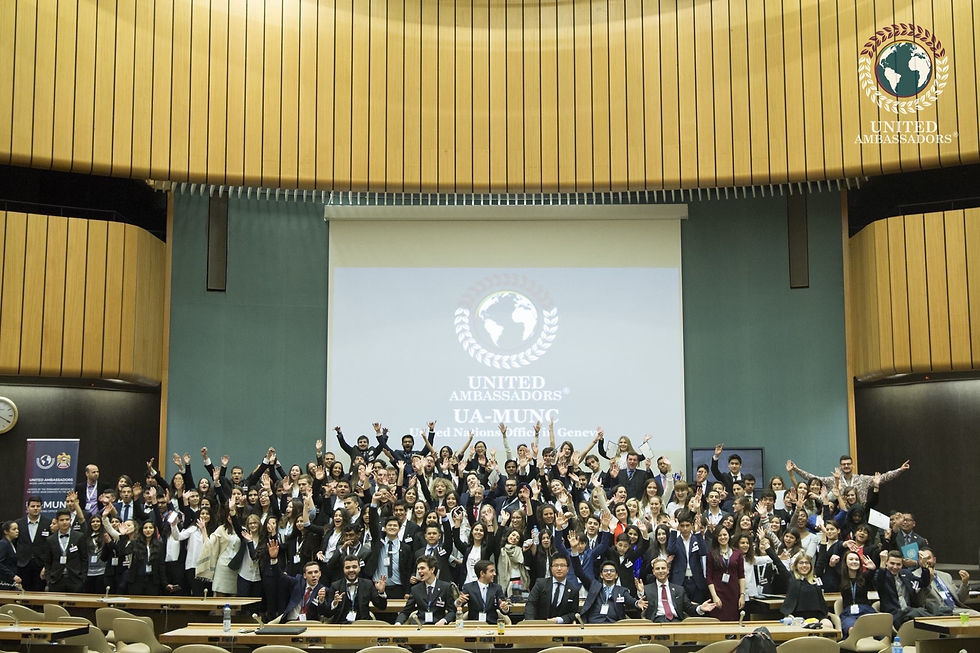Our Story
Honoring our legacy. Expanding our vision.
From the United Nations to Stanford, to Ed-Tech, to you.
We have been empowering social good leaders and innovators worldwide through education since 2013.
Starting as United Ambassadors, and growing into Impact Genius




Our Story
Infinite Possibilities: The Social Good Imperative
Impact Genius is driven by a belief in the boundless potential of every person. We are not just an educational program; we are a transformative experience that empowers learners to redefine success and reimagine their future.
Our journey began with United Ambassadors: a global education organization that collaborated with the United Nations to develop a cutting-edge curriculum on accurate UN simulations. The mission of UA was to advance social good through international programs that engaged youth with the Sustainable Development goals and inspired action to achieve them.
Ever since, our work has evolved into Impact Genius: a pioneering organization empowering a generation of AI for Good professionals through education and advocacy in Silicon Valley.
So how did our work in global affairs education transition into working into technology for social good?
Nurturing Leaders, Changing Lives
United Ambassadors, our former brand name, was founded in 2013. The mission was clear - to build impact-driven leaders and global citizens through education while accelerating youth engagement with the UN Sustainable Development Goals.
United Ambassadors laid the foundation for what would become Impact Genius. With a track record in education since 2013, United Ambassadors built a world-leading reputation in providing pioneering curricula for youth-led academic and scientific simulations of important international organizations, such as the United Nations (UN).
The success of United Ambassadors was evident in its new research, global reach, and real UN collaboration. In consultation with countless UN experts, our founder, Nabila Elassar led research over several years (2015-2019) to further develop the world's most accurate simulation of the United Nations. It was taught at several educational workshops at the UN for many years. It was also applied at UA-MUNC, our conference at the UN HQ in New York and Geneva where students simulated the real UN, developed resolutions to critical global issues, and networked with UN staff, experts, and diplomats.
But given this success, what led to the evolution of our scope..?
The Turning Point: Silicon Valley, and Stanford University
In 2017, the founder of Impact Genius moved to Silicon Valley to grow United Ambassadors. She was mesmerized by the entrepreneurial culture and spirit that surrounded every networking sphere. Envisioning a future in education with higher impact and potential, in 2018, she began a Masters Degree in Education Policy and Leadership at Stanford University,
And that's when it all changed.
Stanford University is a hub of inspiring ideas among a global community that cares about impact. That sets the stage for transformational experiences. Nabila attended a variety of Graduate courses at the Stanford Graduate School of Education, Graduate School of Business, and School of Engineering. This inspired a new, bold vision for our education work, coupled with a belief in the potential of the education technology sector.
Tech Industry Experience: Microsoft HQ
Shortly after graduating from Stanford in 2019, our founder, Nabila, started working at Microsoft. Over nearly 4 years, she was immersed in the inner workings of a leading technology company in both U.S. and global education strategy roles.
In 2022, the idea and vision for Impact Genius came to life. It took 2 years to build the AI for Good Institute. After living and working in Silicon Valley and the technology sector for several years, we built a pioneering educational program that can equip learners with skills and tools to drive social good through AI and technology.
The AI for Good Institute™ at Stanford University:
An immersive training program in Artificial Intelligence innovation, leadership, and policy. It was designed for impact-driven leaders and innovators in every sector: Startups, tech, non-profit, and policy. The program trains and certifies participants to become AI for Good Professionals.
Graduates of our Institute are distinguished with a Certified AI for Good Professional physical certificate and a verified digital badge. In addition, they acquire a robust set of skills, tools, and knowledge to drive AI innovation and thought leadership, including; Technical insight into cutting AI and machine learning applications;
Practical leadership, innovation, and entrepreneurship skills;
Exposure to human-centered AI design;
Proficiency with emerging trends in tech investment, and global AI policy.
In the Age of AI..
The advancements in AI technology are only expected to grow in the coming years. The need to advance AI professional education and skill-building is more critical now than ever before.
This includes the need for capacity building, ie: giving more professionals from all backgrounds access to AI and proficiency in Machine Learning.
But even more importantly, the need for trained ethical AI and Human-Centered AI professionals is dire. We must expand, elevate, and mainstream AI for Good as a field of practice in technology worldwide, and in Silicon Valley,
Now, more than ever, we need to empower the next generation of technology leaders who are qualified to shape AI's design and development, while advocating for ethical, responsible, human-centered AI.
To be effective at this mission, AI for Good professionals must be equipped with a blend of skills. This includes a technical understanding of cutting-edge AI and Machine Learning technologies; effective leadership, innovation, and entrepreneurial skills, a deep understanding of human-centered AI principles, and awareness of the latest trends in tech investment and AI policy.
That is what we are here to do.